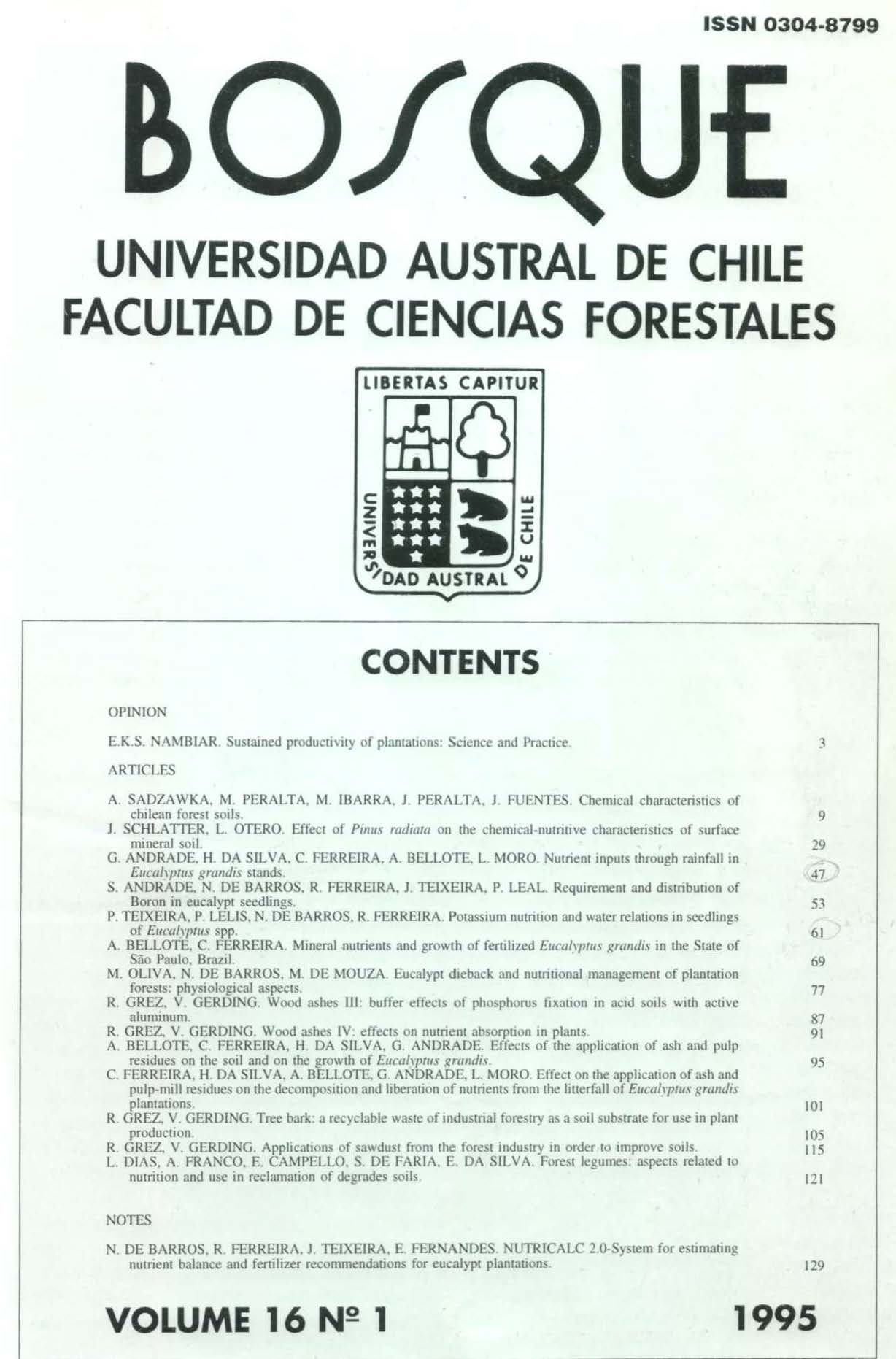Requirement and distribution of boron in eucalypt seedlings
Main Article Content
Abstract
Eucalypt tip die-back symptoms have frequently been observed in the "Cerrado" areas, in Brazil, during the dry season, as a result of boron (B) deficiency. The intensity of this problem varies with species, indicating a possible difference in B requirement among species. Therefore, this trial was carried out to compare seeding growth and the uptake and distribution of B in four Eucalyptus species.
Seedlings of two provenances of E. camaldulensis (provenances S, less susceptible, and PR, more susceptible to die-back), E. dunnii, E. globulus, and E. urophylla were grown in nutrient solution with various levels of B (0; 0.01; 0.03; 0.1, 0.5 and 2.5 mg/l) in three replicates. Dry matter production and B concentration were evaluated when seedlings were 114 days old.
The maximum dry matter yield of E. camaldulensis-S and E. dunnii was 18.9 and 18.1 g/pot, while it was 23.6 and 24.9 g/pot for E. urophylla and E. camaldulensis-PR. The dry matter of E. globulus increased lenearly with B levels. The B levels in the nutrient solution associated with the maximum yield was between 0.044 and 0.049 mg/l for E. camaldulensis-S and PR and E. urophylla; it was 0.096 mg/l for E. dunnii and above 0.1 mg/l for E. globulus. The critical concentration of B in seedling shoots was 115 mg/g for E. dunnii, 137 mg/g for E. globulus, 108 mg/g for E. urophylla, and 95 and 88 mg/g for E. camaldulensis-PR and S, respectively. The difference between the two provenances of E. camaldulensis is due to the higher functional B-requirement of provenance PR as compared with provenance S. Seedling die-back intensity in the control treatment (0 mg/l) followed the same sequence as observed for the critical concentrations.

